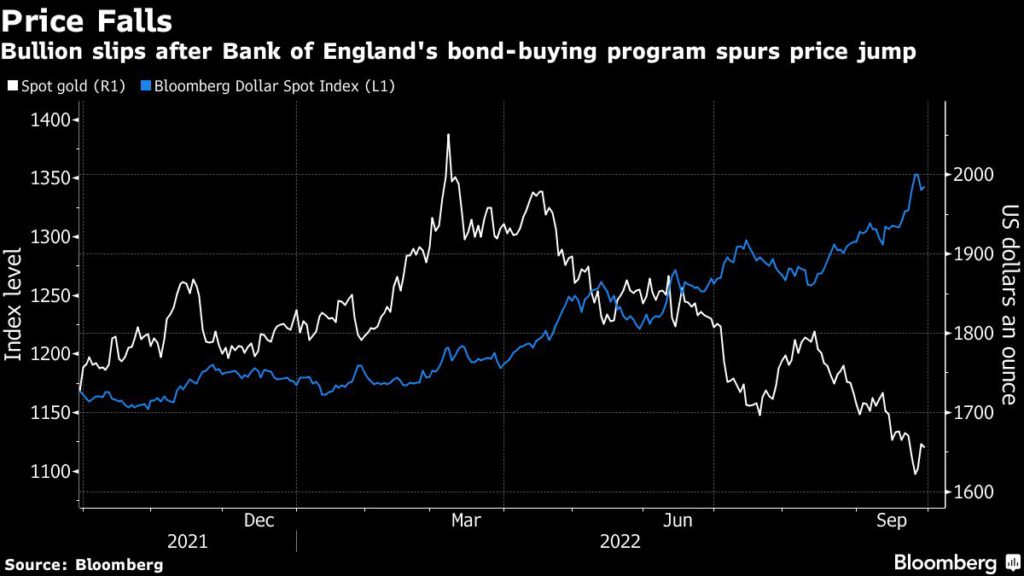Gold price drops as US data signal more aggressive Fed tightening

Gold fell, caught up in a broad selloff as investors sought shelter in cash after the latest US economic data paved the way for more aggressive tightening from the Federal Reserve.
Better-than-expected 2Q core PCE, a measure of inflation, and personal consumption numbers on Thursday suggested the US economy can handle further Fed tightening. Weekly jobless claims fell to the lowest since April, showing a persistently tight labor market.
Bullion earlier fell as much as 1.1% on renewed strength in the US dollar as recession concerns returned after the Bank of England’s move to restore calm. Bullion has suffered in the past two weeks as the greenback strengthened to record levels, with the metal hitting its lowest level in more than two years earlier in the week.
“Investors are still leaning towards scrambling to cash and not quite yet into gold. As long as US economic data shows resilience and pricing pressures remain, gold will have a tough time of signaling a bottom is in place,” said Ed Moya, senior market analyst at Oanda.

Sentiment for the bullion market remains bearish as Fed officials continued to signal the US central bank will keeping increasing rates, with holdings in gold-backed exchange-traded funds slumping to the lowest since May 2020. Inflation-adjusted Treasury yields, a crucial driver for bullion prices, are near the highest in a decade.
“The rise in real yields is a real headwind for gold,” said Adrian Ash, head of research at BullionVault. “It’s kryptonite.”
Spot gold slipped 0.4% to $1,652.73 an ounce at 10:54 a.m. in New York. The Bloomberg Dollar Spot Index was little changed, following its 1% slide in the previous session. Silver fell, while platinum and palladium gained.
(By Yvonne Yue Li, with assistance from Eddie Spence and Sing Yee Ong)
{{ commodity.name }}
{{ post.title }}
{{ post.date }}


Comments